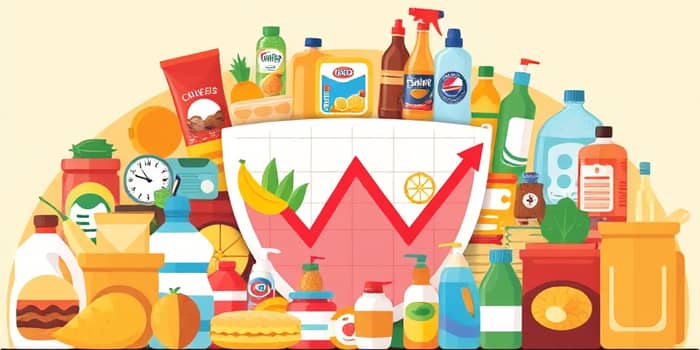
In an investment landscape marked by volatility, rising interest rates, and global uncertainty, consumer staples stand out as an anchor of stability. These companies—producers of food, beverages, household essentials, and personal care items—enjoy inelastic demand irrespective of conditions. That inelasticity translates into consistent revenue streams, making the sector a cornerstone for risk-conscious investors seeking both protection and modest growth through economic storms.
As we navigate 2025, the appeal of staples has only strengthened. Early-year data reveal the sector’s defensive power in stark relief: while the broader market retraced recent gains, staples delivered positive returns and reaffirmed their role as a financial haven.
Consumer staples encompass a range of industries producing goods that households cannot easily forego. Think grocery store aisles stocked with bread, dairy, and snacks; supermarket shelves lined with cleaning supplies and personal hygiene items; and convenience stores brimming with beverages and over-the-counter remedies. These essential products underpin daily life across demographics.
The combination of brand loyalty, household routines, and basic human needs drives steady demand and predictable earnings. Even when economic headwinds deter discretionary spending on luxury goods or high-end electronics, consumers continue to stock up on toothpaste, milk, and detergents. This unwavering purchasing pattern grants staples a defensive profile unmatched by most other sectors.
History repeatedly demonstrates the sector’s resilience. During recessions in 2008–2009 and the pandemic-induced downturn of 2020, consumer staples outperformed the broader market by wide margins. Investors flocked to familiar brands, and earnings reports reflected remarkable stability in margins and cash flows.
In Q1 2025, as the S&P 500 fell 4.6%, the consumer staples sector rose an impressive 4.6%. Meanwhile, the Consumer Staples Select Sector SPDR Fund (XLP) gained 3.6% year-to-date by March, in contrast to a 12.5% YTD decline in the Consumer Discretionary Select Sector SPDR Fund (XLY). These figures underscore staples’ consistent outperformance when market sentiment sours.
Several core factors explain why consumer staples remain robust across uncertain cycles:
These attributes create a compelling defensive package. Brands like Procter & Gamble and retailers such as Walmart and Costco leverage scale and distribution reach, ensuring product availability and operational efficiencies that smaller rivals often can’t match.
The broader economic environment in 2025 is shaping up as a period of “strong but cautious” growth. Consumers carry healthy balance sheets, employment remains stable, and real wages are gradually improving. Yet memories of inflationary pressure and price hikes temper spending enthusiasm.
Looking ahead, several trends will influence the consumer staples narrative:
Overall, the sector stands to benefit from stable demand, but growth driven solely by price hikes is reaching its limits. Companies must now pivot to innovation and efficiency to sustain margin expansion.
To maintain competitive advantage, leading staples companies are embracing technology and sustainability initiatives. From digital transformation and AI-enhanced logistics to eco-friendly packaging and carbon footprint reductions, these efforts serve two purposes: driving cost savings and appealing to increasingly conscious consumers.
Examples include:
These strategic investments aim to protect margins, boost brand reputation, and attract investors focused on environmental, social, and governance (ESG) criteria.
No sector’s defensive qualities are infinite. Consumer staples face their own set of risks:
Furthermore, heavy reliance on price increases to drive growth is no longer a sustainable long-term strategy. Executives increasingly emphasize the need for product innovation, efficiency gains, and deeper consumer engagement.
For investors seeking a balanced approach in uncertain markets, consumer staples offer a unique combination of income and relative stability. Dividend yields in the sector often exceed the broader market average, and earnings volatility is typically lower. This makes staples a natural complement to higher-beta growth or cyclical holdings.
Practical steps for portfolio allocation include:
By combining staples with cyclical and growth assets, investors can craft resilient portfolios built to withstand economic swings while capturing upside when markets recover.
In the face of economic uncertainty, consumer staples continue to demonstrate why they are regarded as the ultimate defensive sector. Their supply chain resilience and sustainability, pricing power, and safe haven for risk-averse investors attributes ensure that these businesses not only survive but often thrive when broader markets struggle.
As 2025 unfolds, the sector’s ability to blend traditional defensive qualities with forward-looking innovation makes it a compelling choice for those seeking stability, income, and steady growth. Whether you are building a core portfolio allocation or fine-tuning your asset mix, consumer staples deserve a central role in weathering uncertain cycles and emerging stronger on the other side.
References













